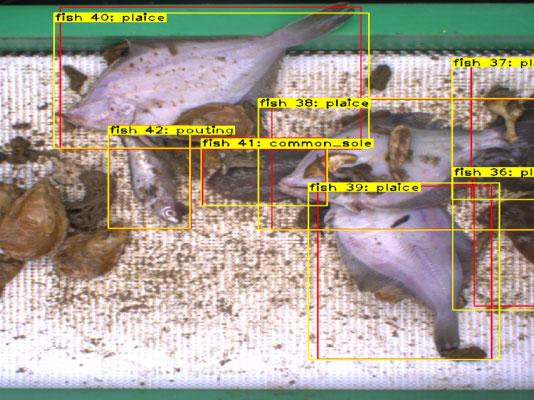TL;DR:
- EU-funded FDF project introduces AI tool for Fully Documented Fisheries.
- AI system automates fish size and species recognition, streamlines catch handling.
- Enhances compliance, transparency, and sustainability in the fisheries sector.
- Provides high-quality data for research, policy, and improved stock assessment.
- Potential commercial applications and increased transparency for stakeholders.
Main AI News:
In the world of fisheries, the persistent challenge of unwanted catches has imposed a significant burden on the sector, both in terms of time and resources. Within the European Union (EU), stringent regulations dictate that all catches must be meticulously recorded and brought ashore, a process known to be both time-consuming and financially taxing. However, a groundbreaking solution has emerged, harnessing the power of artificial intelligence (AI) to address these issues head-on.
Thanks to substantial EU funding, Dutch researchers and the fishing industry have collaboratively pioneered an AI-driven tool as part of the Fully Documented Fisheries (FDF) project. This innovative technology promises to revolutionize the sector by automating the identification of fish species and sizes, streamlining the handling of catches on board vessels, and providing invaluable data for effective fisheries management.
Unlike existing systems, FDF not only ensures compliance with landing and registration obligations but also injects a new level of transparency and sustainability into the industry. By focusing on high-quality data for fisheries research, this project seeks to foster a sustainable and flourishing fishing sector.
Central to this transformative endeavor is a sophisticated algorithm capable of swiftly recognizing fish species and sizes. This capability enables the system to distinguish between catches suitable for human consumption (above minimum size) and those deemed unwanted (below minimum size). Such a task would typically burden the crew, but with FDF, it is handled effortlessly.
Albert Visser, a trawler skipper, notes the advantages of the camera system, stating, “One of the advantages of the camera system, for example, is that you don’t need to sort undersized fish manually.”
The potential benefits of FDF are manifold. It promises to enhance on-board catch processing, reduce the crew’s workload, and alleviate administrative burdens. Moreover, it enables real-time monitoring of total catches by size, species, and weight, generating comprehensive data for scientific research, stock estimates, policy development, and fisheries management.
Beyond these advantages, FDF holds the potential for commercial use, notably in improving fisheries’ selectivity. Regardless of its application, FDF guarantees increased transparency, benefiting not only the industry but also consumers and non-governmental organizations (NGOs).
By seamlessly integrating cutting-edge technology into commercial fisheries, FDF represents a monumental stride toward sustainable practices. Edwin van Helmond, a fisheries biologist at Wageningen University and Research, underscores the project’s broader impact, stating, “We have improved data, improved stock assessment, better research, better policy, and, ultimately, a better fisheries sector. It’s really a win-win situation.”
Having run as a pilot project for over three years, FDF has garnered substantial participation from the fishing community, with fishers voluntarily joining the initiative and receiving compensation for their additional efforts. The system’s implementation onboard participating vessels involves video cameras recording the fish’s journey from the net unloading area to the vessel’s hold. An on-board AI unit then deciphers the video images, identifying and recording each fish’s species and size, empowering fishers to make informed decisions about their catches.
Originally targeting beam trawlers, a vital component of Dutch fisheries, FDF’s promising results have prompted the expansion of the project to encompass other fleet segments and countries. The next phase will encompass various fishing methods and include other EU Member States, primarily Denmark and Belgium, marking a significant milestone in the pursuit of sustainability within the European fishing sector.
Conclusion:
The introduction of AI-driven technology through the Fully Documented Fisheries (FDF) project marks a pivotal moment in the fishing industry. This innovation promises to significantly enhance efficiency, transparency, and sustainability. With its potential to streamline operations and provide high-quality data, FDF could lead to a more responsible and profitable fishing market, appealing to both industry players and environmentally-conscious consumers.

